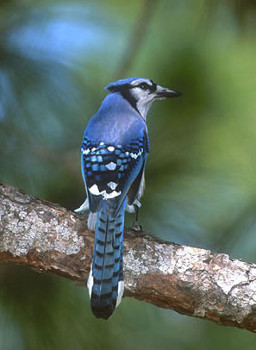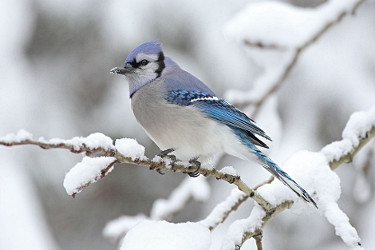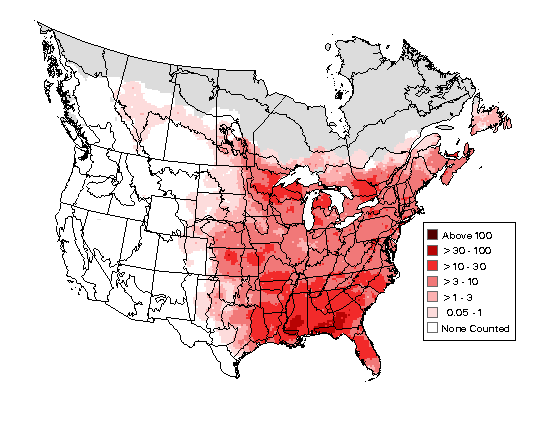Blue Jay

Blue Jay Information
Length: 11 - 12.5"
Habitat: Deciduous and mixed woodlands, especially those with oaks and beeches; less frequently, coniferous forests; farmlands, roadsides, parks, and residential areas.
Diet: Acorns (staple) and other nuts, seeds, wild fruits and berries, insects and spiders, birds' eggs and nestlings; occasionally, frogs and mice.
Preferred Bird Feeder Food
Blue Jays favor peanuts, whole or shelled. They also enjoy black oil sunflower seeds, cracked corn, dried fruit, and suet. They will at times eat safflower seeds and millet.
These birds prefer platform feeders or large hoppers. However, they will readily feed on the ground or from suet cages and sometimes will eat from tube feeders.
Additional Information
Blue JayPhotos, range, habitat, description, reproduction, lifespan, behavior, communication, food habits, predation, and conservation status. (From Animal Diversity Web)
Blue Jay

By Mdf [CC SA 3.0]
Blue Jay
Identification Tips
- Black sturdy bill
- Blue crest and upperparts
- Black eyeline and breastband
- Grayish-white throat and underparts
- Bright blue wings with black bars and white patches
- Long blue tail with black bars and white corners
- Dark legs
- Migrates during the day in small flocks
Similar Species
Because of its large size, blue coloration and crest the Blue Jay is quite distinctive. Steller's Jay has dark underparts. Other jays lack a crest and have different markings.
(Credit: U. S. Geological Survey)
Blue Jay
Breeding Bird Survey Map,
2011-2015

(Image credit: USGS)
Range in New England
The Blue Jay is found year-round in the New England region.
Blue Jay
Range Maps from Cornell
Blue Jay
year-round and nonbreeding range![]()
Includes separate map of sightings.
Blue Jay
Christmas Bird Count Map
Historical CBC Map from USGS